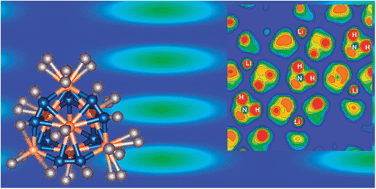Density functional theory simulations of complex hydride and carbon-based hydrogen storage materials†
Abstract
This critical review covers the mechanisms underlying density functional theory (DFT) simulations and their relevance in evaluating, developing and discovering new materials. It is intended to be of interest for both experimentalists and theorists in the expanding field of hydrogen storage. We focus on the most studied classes of materials, metal-

- This article is part of the themed collection: Renewable Energy

 Please wait while we load your content...
Please wait while we load your content...